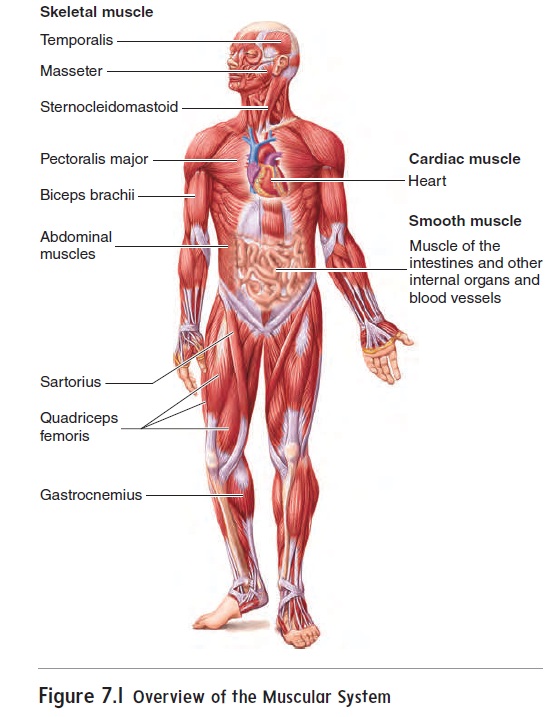Chapter: Essentials of Anatomy and Physiology: Muscular System
Functions of the Muscular System
FUNCTIONS OF THE MUSCULAR SYSTEM
A runner rounds the last corner of the track and sprints for the finish line. Her arms and legs are pumping as she tries to reach her maximum speed. Her heart is beating rapidly, and her breathing is rapid, deep, and regular. Blood is shunted away from her digestive organs, and a greater volume is delivered to her skeletal muscles to maximize their oxygen supply. These actions are accomplished by muscle tissue, the most abundant tissue of the body and one of the most adaptable.
You don’t have to be running for the muscular system to be at work. Even when you aren’t consciously moving, postural mus-cles keep you sitting or standing upright, respiratory muscles keep you breathing, the heart continuously pumps blood to all parts of your body, and blood vessels constrict or relax to direct blood to organs where it is needed.
In fact, movement within the body is accomplished in various ways: by cilia or flagella on the surface of certain cells, by the force of gravity, or by the contraction of muscles. But most of the body’s movement results from muscle contraction. As described, there are three types of muscle tissue: skeletal, cardiac, and smooth (figure 7.1). Following are the major func-tions of the muscular system:
1. Movement of the body. Contraction of skeletal muscles isresponsible for the overall movements of the body, such as walking, running, and manipulating objects with the hands.
2. Maintenance of posture. Skeletal muscles constantlymaintain tone, which keeps us sitting or standing erect.
3. Respiration. Muscles of the thorax carry out the movementsnecessary for respiration.
4. Production of body heat. When skeletal muscles contract,heat is given off as a by-product. This released heat is critical to the maintenance of body temperature

Figure 7.1 Overview of the Muscular System
5. Communication. Skeletal muscles are involved in all aspects of communication, including speaking, writing, typing, gesturing, and facial expressions.
6. Constriction of organs and vessels. The contraction of smooth muscle within the walls of internal organs and vessels causes those structures to constrict. This constriction can help propel and mix food and water in the digestive tract, propel secretions from organs, and regulate blood flow through vessels.
7. Contraction of the heart. The contraction of cardiac muscle causes the heart to beat, propelling blood to all parts ofthe body.
Related Topics